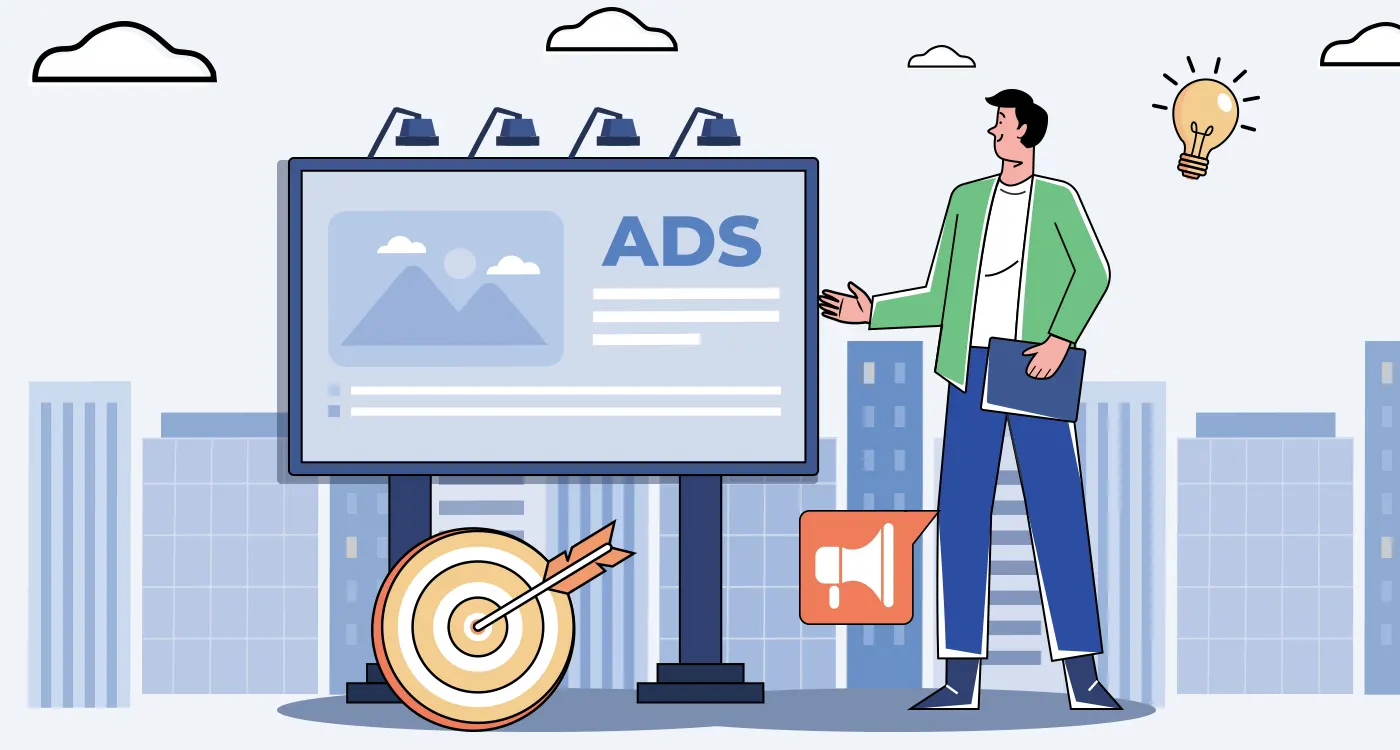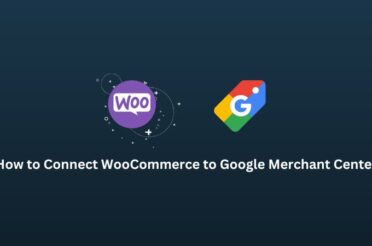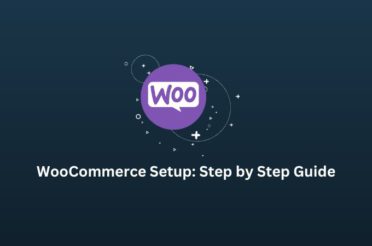Small businesses face challenges in California’s busy business world. They must find ways to stand out and get noticed amongst their competition. One meaningful way they can do this is through performance marketing—putting money into ads to make more people see and learn about their business.
Let’s explore some helpful ideas for implementing performance marketing for small businesses in California.
Understanding Audiences in California
California is an extensive and diverse place. It has many different kinds of people and businesses. Small businesses must learn about their audience before hiring an agency for performance marketing. This involves researching who might be interested in what they are selling. They also need to look at their competitors and determine what different demographics are like.
- Demographic Diversity:
- California has diverse population includes people from various ethnicities, ages, and cultural backgrounds.
- Small businesses need to tailor their advertising content to resonate with the diverse preferences and interests of the California consumer base.
- Digital Content Consumption:
- The tech-savvy population in California relies heavily on digital platforms for information and entertainment.
- Video content is popular among Californians, and small businesses can create engaging video ads to capture attention on YouTube and social media.
- Online Buyers and Services:
- Californians are accustomed to online shopping and utilizing online services.
- Small businesses can highlight the convenience of their products or services, emphasizing easy online access and transactions.
- E-commerce Trends:
- E-commerce has a strong presence in California, with many residents preferring to shop online.
- Small businesses should optimize their online stores, ensuring a user-friendly experience and incorporating features that enhance the online shopping process.
- Online Spending Habits:
- Californians often spend considerable time online, making digital advertising an effective way to reach potential customers.
- Understanding the peak times for online activity in California can help businesses schedule their ads for maximum visibility.
- Social Media Engagement:
- Social media platforms like Facebook and Instagram play a crucial role in the lives of Californians.
- Visual content and storytelling are powerful tools for small businesses to connect with the audience. High-quality images and videos showcasing products or services can generate interest and engagement.
- Mobile Optimization:
- Given the on-the-go lifestyle of many Californians, mobile optimization is critical.
- Ads should be designed to provide a seamless experience on mobile devices, ensuring potential customers can easily access information and purchase from their smartphones.
- Targeting Local Preferences:
- Understanding regional preferences is essential for small businesses. Whether it’s referring to landmarks, events, or cultural references, incorporating local elements into ad content creates a sense of connection and familiarity.
- Analyzing Online Spends:
- Utilizing analytics tools, businesses can track and analyze online spending patterns.
- This data can guide small businesses in allocating their advertising budget effectively, focusing on platforms and times that yield the best results.
- Evolving E-commerce Landscape:
- The e-commerce landscape is ever in California, with emerging trends such as same-day delivery services and innovative online shopping experiences.
- Small businesses should stay informed about these trends to adapt their advertising strategies accordingly.
Choosing the Best Platforms for Ads
There are lots of ways for small businesses to show their ads in a particular community. People in California use these platforms a lot. For example, Google Ads can help a business appear when people in California search for things related to their product or service. Businesses can share pictures and videos on Facebook and Instagram to catch people’s attention. LinkedIn is an excellent place to show ads for businesses that work with others. This is where professionals and important decision-makers connect. Small businesses can make ads that show how good they are at what they do and share them with the right people.
Writing Ad Copies, People Want to See
Creating ads that resonate with California customers involves a thoughtful approach beyond promoting products or services. The language, messaging, and content must align with the preferences and values of the diverse Californian audience.
Here are some insights and examples to illustrate this:
- Highlighting Local Relevance:
- Californians take pride in their local communities, so ads should emphasize how the business contributes to or understands local culture.
- Example: “There are many ways for small businesses to show their ads. People in California use these platforms a lot. For example, Google Ads can help a business appear when people in California search for things related to their product or service, aligning with the targeted performance marketing approach.”
- Emphasizing Unique Selling Proposition (USP):
- Ads should communicate what makes the business stand out. The USP should be front and center, whether exceptional quality, unique features, or outstanding customer service.
- Example: “Experience the difference! Our handcrafted products are made with care and passion, making us your go-to choice for [product or service] in California.”
- Incorporating Local Events and Landmarks:
- Referencing local events, festivals, or landmarks creates a sense of connection with the audience.
- Example: “Gear up for [Local Event] with exclusive deals! Visit our store and celebrate the spirit of [City] with special discounts on our latest collections.”
- Tapping into Californian Lifestyle:
- Understanding the lifestyle of Californians helps in tailoring ad content. Whether it’s outdoor activities, fitness, or a focus on wellness, aligning with these interests can make the ads more appealing.
- Example: “Fuel your active lifestyle with our health-conscious options. Because in California, we believe in living well and feeling good daily!”
- Clear Calls-to-Action (CTAs):
- Ads should guide customers on the next steps, whether purchasing, signing up for a newsletter, or visiting the store.
- Example: “Discover the taste of California – order now for fast, local delivery! Your culinary adventure awaits; don’t miss out.”
- Social Proof and Local Endorsements:
- Incorporating customer testimonials, reviews, or endorsements in ad copy adds credibility and builds trust.
- Example: “Join the ranks of satisfied customers! See why [Local Influencer/Celebrity] loves our products. Try it yourself and experience the difference.”
- Seasonal and Timely Messaging:
- Aligning ad content with seasonal or timely events in California keeps the messaging relevant and engaging.
- Example: “Celebrate summer in California style! Our new collection is here – perfect for sunny days and warm nights. Visit us today!”
- Environmental and Social Responsibility:
- Californians are often conscious of environmental and social issues. Ads highlighting the business’s commitment to sustainability or community initiatives can resonate well.
- Example: “Join us in making a positive impact! With every purchase, we contribute to local environmental initiatives because we care about the future of California.”
Making the Most of Money
For a small business owner, wisely investing in advertising is crucial for achieving a solid return on investment (ROI). Here’s a breakdown of why being strategic with ad spending is essential, a fundamental principle in performance marketing.
- Start Small and Test:
- Small businesses should begin with a modest budget to test the effectiveness of their ads. This allows them to assess how well their campaigns resonate with the audience without committing significant money upfront.
- Flexible Spending:
- The beauty of digital advertising is its flexibility. Small businesses have the freedom to adjust their budgets based on performance. If the initial investment proves successful, they can increase spending to reach a larger audience or explore additional advertising channels.
- Understanding Different Payment Models:
- Various platforms offer payment models, such as cost-per-click (CPC) or cost-per-mille (CPM). Small businesses should choose the model that aligns with their goals and budget constraints.
- Choosing the Right Platforms:
- Different advertising platforms cater to various business needs. Small businesses should analyze the platforms that align with their target audience and industry.
- Performance Monitoring and Adjustment:
- Regularly monitoring the performance of ads is essential. Small businesses should leverage advertising platforms’ analytics tools to track key metrics. Based on the results, they can adjust budgets and bids accordingly.
- Smart Scaling:
- As small businesses witness positive outcomes, they can effectively scale their advertising efforts. This involves increasing the budget in a controlled manner to avoid overspending while capitalizing on the momentum gained.
- Aligning with Business Goals:
- Small businesses should align their advertising spending with overarching business goals. Whether it’s increasing brand awareness, driving website traffic, or boosting sales, the budget allocation should support these objectives.
Using Popular Search Engines to Be Seen Locally
Small businesses in California can significantly benefit from leveraging the power of the search engine to increase local visibility. By incorporating local SEO strategies, businesses can ensure they appear in relevant local searches and connect with potential customers in their community.
Here’s how small business owners can utilize the Internet to be seen locally:
- Google My Business (GMB) Listing:
- Small businesses should claim and optimize their Google My Business (GMB) listing. This free tool helps businesses manage how they appear on Google Search and Maps.
- Encourage Positive Reviews and Ratings:
- Satisfied customers can be powerful advocates. Small businesses should encourage customers to leave positive reviews on their GMB listing, positively influencing local search rankings.
- Example: “Share the love! Happy with our service? Leave a positive review on Google and help others discover our community’s great experiences.”
- Localized Content Creation:
- Create content that reflects the local context—blog posts, articles, or social media content about local events, trends, or community initiatives. This establishes businesses as part of the community and enhances local search visibility.
- Example: “We love our community! Stay updated on local events and news by following our blog. We’re not just a business; we’re your neighbors sharing what makes our community special.”
- Utilize Local Keywords:
- Incorporate local keywords in the website’s content and online profiles. Think about terms that locals might use when searching for products or services in the area.
- Example: “Searching for [product or service] in [City]? Look no further! Our business proudly serves the local community with quality and care.”
- Consistent Name, Address, and Phone Number (NAP) Citations:
- Consistency in business information across online platforms is crucial. Ensure the business’s name, address, and phone number (NAP) information is consistent on the website, social media profiles, and online directories.
- Participate in Local Online Communities:
- Engage with local online communities and forums. Participating actively in discussions and providing valuable insights can increase brand visibility.
- Example: “Join the conversation! We love being part of the [City] community. Connect with us on local forums and discover what our neighbors discuss.”
- Local Event Sponsorship and Promotion:
- Sponsor or participate in local events and ensure online promotion of these activities. This not only supports the community but also boosts the business’s visibility.
- Example: “Proud sponsors of [Local Event]! Join us for a day of fun and community spirit. Check our social media for event updates and exclusive promotions.”
- Mobile-Friendly Website:
- Ensure the business website is mobile-friendly, as many local searches happen on mobile devices. A seamless mobile experience contributes to higher search rankings.
Being Easy to Find on Phones
With the prevalence of phone usage in California, small businesses must prioritize optimizing their online presence for mobile users. Mobile-friendly websites and apps are essential for reaching and engaging with customers who rely heavily on their phones.
Here’s why and how small businesses can make it easy for people to find them on phones:
- Mobile-Centric Consumer Behavior:
- Many people in California use their smartphones as their primary devices for internet access and information retrieval.
- Responsive Website Design:
- Small businesses should invest in responsive website design, ensuring their websites adapt seamlessly to different screen sizes, including mobile devices.
- Fast Loading Times:
- Mobile users appreciate fast-loading pages. Small businesses should optimize their websites to load quickly on mobile devices to prevent users from bouncing off due to slow loading times.
- Mobile-Optimized Ads:
- When running ads, small businesses should ensure that the ad creatives are optimized for mobile viewing. This includes visually appealing images or videos that capture attention on smaller screens.
- Clear Mobile Navigation:
- Simplify website navigation for mobile users. Clear and intuitive menus help users find information easily without getting frustrated.
- Mobile-Focused Content:
- Tailor content for mobile consumption. Use concise, engaging language, and consider the mobile user’s context when presenting information.
- Tap-to-Call and Map Integration:
- Implement features like “tap-to-call” buttons and map integration on mobile websites. This facilitates direct communication and provides easy directions for customers.
- Mobile-Optimized Forms:
- If the business requires users to fill out forms, ensure that these forms are optimized for mobile entry, with easy-to-use input fields and minimal typing required.
A/B Testing to Get Better
Small businesses can enhance the effectiveness of their advertising efforts by embracing a strategy known as A/B testing. This involves experimenting with different elements within their ads to understand what resonates best with their audience.
Here’s why A/B testing is valuable and how businesses can implement it for continual improvement:
- Understanding Audience Preferences:
- A/B testing allows small businesses to gain insights into what their audience prefers. Businesses can identify the specific factors that capture attention and drive engagement by testing different elements.
- Optimizing Headlines and Copy:
- Experimenting with different headlines and ad copy helps businesses identify language that resonates best with their target audience. This optimization can significantly impact click-through rates.
- Visual Appeal:
- A/B testing visuals, such as images or videos, helps businesses understand the visual elements that attract the most attention. This can lead to more effective and visually appealing ad content.
- Testing Call-to-Action (CTA):
- Different calls-to-action can result in varied user responses. A/B testing CTAs helps businesses identify the language and prompts that encourage the desired actions from their audience.
- Iterative Improvement:
- A/B testing is an ongoing process of improvement. Small businesses can continuously refine their approach and stay aligned with changing audience preferences by regularly testing and tweaking results-based elements.
- Segmentation Testing:
- Businesses can also conduct A/B testing on different audience segments. This helps tailor content to specific demographics or customer groups, ensuring a more personalized approach.
- Performance Metrics Analysis:
- A/B testing allows businesses to analyze performance metrics such as click-through, conversion, and engagement. This data-driven approach helps make informed decisions about which elements contribute most to success.
- Feedback Loop with Customers:
- Engage customers in the testing process by inviting feedback. This makes them feel involved and provides valuable insights into their preferences.
Monitoring the Results
Once small businesses have launched their ads, monitoring their performance is crucial to understanding their effectiveness in achieving their goals. By utilizing tools provided by the advertising platforms, businesses can gain valuable insights into the reach and impact of their campaigns.
Here’s why watching what happens is essential and how businesses can use this information for informed decision-making:
- Performance Evaluation:
- Businesses must evaluate the performance of their ads regarding visibility, engagement, and conversion. Watching what happens provides a real-time assessment of the ad campaign’s success.
- Audience Engagement Metrics:
- Ad platforms offer metrics such as click-through rates, impressions, and engagement statistics. Businesses can analyze these metrics to gauge how actively the audience interacts with their ads.
- Conversion Tracking:
- Tracking conversions, such as purchases, sign-ups, or other desired actions, provides insights into the effectiveness of the ads in driving meaningful outcomes.
- Identifying High-Performing Elements:
- Watching what happens helps businesses identify which elements of their ads resonate most with the audience. This knowledge informs future content creation, whether it’s a specific image, headline, or call-to-action.
- Adjusting Strategies:
- If certain ads or strategies are more successful than others, businesses can use this information to adjust their approach. This could involve allocating more budget to high-performing ads or refining targeting parameters.
- Budget Optimization:
- Monitoring ad performance helps businesses make informed decisions about budget allocation. If certain ads deliver a high return on investment, businesses may consider increasing the budget for those specific campaigns.
- Data-Driven Decision-Making:
- The information gathered from ad performance metrics enables businesses to make data-driven decisions. This ensures that future strategies are based on insights rather than assumptions.
- Continuous Improvement:
- Watching what happens creates a cycle of continuous improvement. Businesses can refine their strategies, content, and targeting based on real-time feedback, fostering ongoing success.
In Conclusion
Performance marketing is a big help for small businesses in California. It helps them get noticed, find customers, and grow. Small businesses can do this by learning about the people in California, choosing good places to show ads, writing ads that people want to see, and using money wisely. They can also use the Internet to be seen locally, be easy to find on phones, test to get better, follow the rules, and watch what happens. Small businesses can do well in the busy California business world by doing these things.










